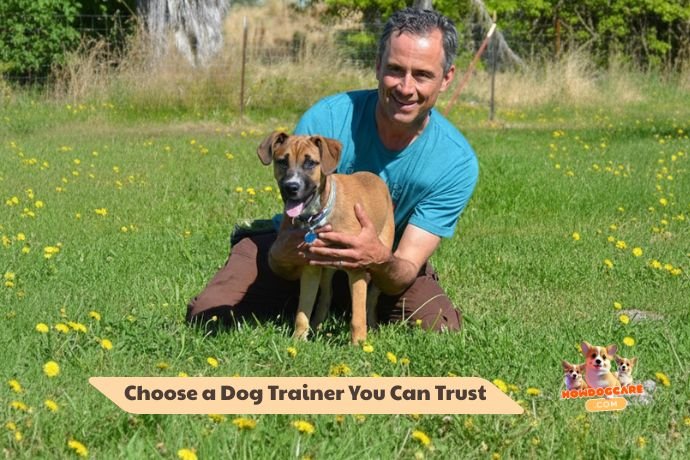Understanding the Importance of Professional Dog Training
Why Training Your Dog Is Non-Negotiable
Let’s face it: no matter how cute and cuddly your pup is, an untrained dog can become a source of stress. From excessive barking and destructive chewing to leash pulling and aggressive behavior, poor manners can make life tough for both you and your furry companion. That’s where professional dog training comes in. Training isn’t just about teaching your dog to sit or stay—it’s about setting up a foundation for a safe, balanced, and happy relationship between pet and owner.
Professional dog training helps build communication between you and your dog. Think of it as learning a new language—your dog needs to understand your signals and you need to learn how to read their responses. This mutual understanding leads to fewer misunderstandings, more positive interactions, and way more tail wags. It’s especially critical during your dog’s developmental phases, such as puppyhood or adolescence, when habits (both good and bad) can form quickly.
But here’s the thing: not all dogs are the same. Some are shy and withdrawn, others bold and energetic. A well-trained professional knows how to adjust techniques based on your dog’s personality, ensuring the training actually works. This kind of individualized approach isn’t something you get from random YouTube videos—it requires expertise.
Lastly, professional training is often the first step toward solving serious behavioral issues like aggression, separation anxiety, and fearfulness. If left unaddressed, these problems can escalate and even become dangerous. So, if you’ve ever wondered whether training is worth it, the answer is a resounding yes. A good trainer doesn’t just train dogs—they transform lives, both canine and human.
Long-Term Benefits of Hiring a Professional Dog Trainer
Hiring a professional dog trainer is an investment, and like any smart investment, the returns are long-term and deeply rewarding. For starters, proper training reduces the risk of future behavioral issues. A well-trained dog is far less likely to engage in destructive habits or pose a threat to others. That peace of mind alone is worth its weight in gold.
Secondly, training strengthens the bond between you and your dog. You’ll start to notice how your dog looks to you for guidance, how they respond positively to your cues, and how they genuinely enjoy the learning process. That kind of relationship doesn’t just happen—it’s built, and training is the construction crew.
Let’s not forget safety. A trained dog is easier to manage in public spaces, less likely to bolt into traffic, and more likely to respond in emergencies. For dog owners living in cities or busy neighborhoods, this level of control can be lifesaving.
Socialization is another key benefit. Good trainers often integrate exposure to new environments, people, and dogs in their sessions. This helps prevent issues like fear-based aggression or antisocial behaviors that make outings stressful. You’ll be able to take your pup to dog parks, cafes, or even on vacation without a second thought.
Lastly, the structure and mental stimulation provided by training enrich your dog’s life. Just like humans, dogs need a purpose and challenges to stay mentally fit. Structured training keeps their brain sharp, reduces boredom-related mischief, and makes them happier overall.
Key Qualities of a Trustworthy Dog Trainer
Certifications and Educational Background
One of the first things you should look for when trying to choose a dog trainer is certification. But let’s clear something up first: the dog training industry is largely unregulated. That means technically, anyone can call themselves a “dog trainer” without formal education. Scary, right? That’s why certifications matter so much—they’re one of the few ways to verify that a trainer has taken the time to learn the science behind canine behavior.
Look for credentials from respected organizations like the International Association of Canine Professionals (IACP), the Certification Council for Professional Dog Trainers (CCPDT), or the Association of Professional Dog Trainers (APDT). These groups require trainers to pass exams, adhere to ethical standards, and keep up with continuing education. That’s a good sign they’re committed to their craft.
Another thing to check? Whether the trainer has a background in animal behavior science. Some trainers have degrees in animal psychology or have apprenticed under seasoned experts. That kind of hands-on experience is invaluable, especially when dealing with complex behavioral issues.
Don’t be shy about asking for proof of credentials. A qualified, confident trainer will be happy to show you their certifications and even explain the methodologies they follow. Transparency is a great sign that you’re dealing with someone trustworthy and ethical.
And here’s a tip: avoid anyone who refuses to show credentials or belittles professional standards. Passion for dogs is awesome, but without the knowledge to back it up, it’s just not enough. Your dog deserves more than guesswork.
Experience with Specific Breeds or Behaviors
Not all dogs are created equal, and neither are dog trainers. Some specialize in working with high-energy breeds like Border Collies or Huskies, while others excel at training small dogs or helping senior pups learn new tricks. Experience with specific breeds or behavioral challenges can make all the difference in training success.
Let’s say you have a stubborn Bulldog or a reactive German Shepherd. You need a trainer who understands not just dogs, but your dog. Breed-specific knowledge allows a trainer to anticipate behaviors and use techniques that work best for your dog’s natural instincts. A trainer familiar with hounds, for instance, might use scent-based games to keep them engaged, while a trainer experienced with working breeds may include structured jobs or tasks.
Beyond breed, behavior-specific experience is crucial. Aggression, fear, separation anxiety, hyperactivity—these aren’t just quirks. They’re serious issues that require a skilled and empathetic hand. A trainer who’s handled hundreds of fearful rescues will approach your timid rescue dog differently than one who mainly teaches basic obedience.
Ask potential trainers how many dogs like yours they’ve worked with. Request case studies or success stories. See if they’ve handled dogs with similar energy levels, temperaments, or behavioral problems.
Lastly, trust your gut when you meet them. A trainer with true experience won’t need to brag—they’ll exude quiet confidence, answer your questions thoughtfully, and show an understanding of your dog that feels intuitive and reassuring.
Types of Dog Training Methods
Positive Reinforcement vs. Aversive Techniques
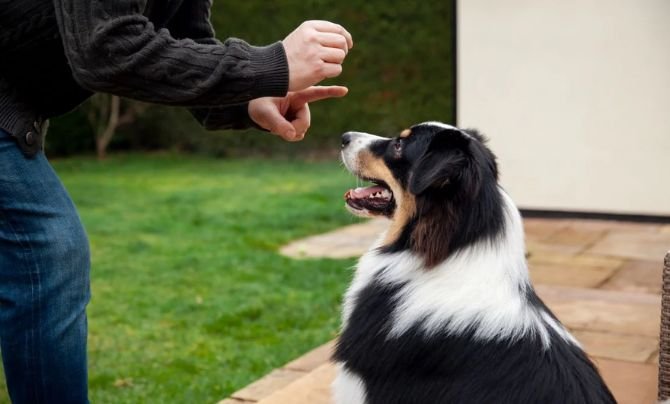
This is a hot-button issue in the dog world—and for good reason. The way a trainer approaches behavior correction can have lifelong consequences for your dog’s wellbeing. So let’s break it down.
Positive reinforcement means rewarding desired behaviors with treats, praise, toys, or play. It’s a science-backed method that builds trust and encourages your dog to repeat good behavior. Think of it like teaching a child: would you rather reward good grades or scold every mistake? Positive reinforcement creates a safe learning environment, boosts confidence, and fosters a joyful connection between dog and trainer.
On the flip side, aversive techniques rely on punishment or negative consequences. These might include choke chains, shock collars, or harsh verbal corrections. While they might get quick results, they often come at the cost of fear, anxiety, or even aggression. Imagine learning in a classroom where every mistake got you yelled at—it’s not effective, and it’s not kind.
Look for a trainer who openly uses humane, science-based methods. Ask about their stance on punishment, their tools of choice, and whether they adapt their methods based on each dog. Transparency is everything.
And here’s something important: even within positive training, there’s nuance. Some dogs need more structure, while others respond better to play-based methods. A skilled trainer knows how to tweak their techniques for maximum results—without ever crossing the line into intimidation.
Group Classes vs. Private Training Sessions
Choosing between group classes and private sessions isn’t just about budget—it’s about what works best for you and your dog. Group classes are fantastic for socialization. Your dog learns to behave around distractions like other dogs and people. These classes usually follow a set curriculum, cover basic commands, and cost less than one-on-one sessions.
However, not all dogs thrive in that environment. Shy or reactive dogs might feel overwhelmed, making it hard for them to focus. That’s where private training shines. It’s completely customized, allowing the trainer to focus on your dog’s specific needs and pace. You also get direct feedback, which accelerates your learning as an owner.
Some trainers even offer hybrid models—starting with private sessions and transitioning into group classes once the dog is ready. That’s often the best of both worlds.
Ultimately, your choice should be based on your dog’s temperament, your training goals, and your schedule. Don’t feel pressured into a one-size-fits-all program. Flexibility is key.
How to Research and Find the Best Dog Trainers in Your Area
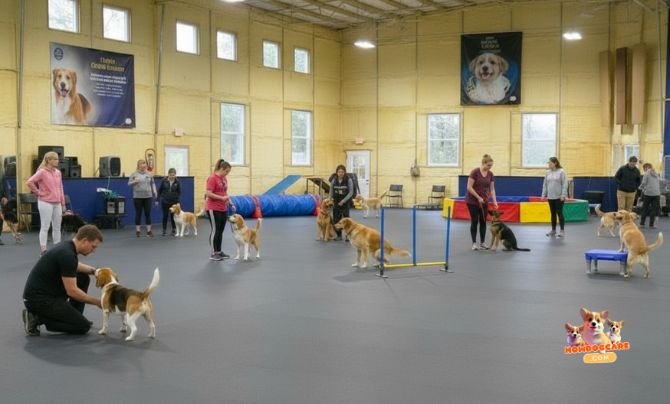
Online Reviews, Forums, and Ratings
When you want to choose a dog trainer you can truly rely on, the first place most of us turn to is the internet. But navigating through hundreds of dog trainer listings can feel like searching for a needle in a haystack. That’s where reviews, forums, and ratings come into play—they’re your secret weapon in separating the best from the rest.
Start with Google Reviews, Yelp, and Facebook. These platforms often give you a snapshot of a trainer’s reputation in your area. Look for consistent positive feedback. One or two bad reviews? That’s normal. But a pattern of negative experiences? Major red flag. Look for phrases like “helped with aggression,” “patient and knowledgeable,” or “my dog transformed in weeks.” These real-life experiences provide genuine insight into the trainer’s approach and success rate.
Next, check dog forums like Reddit’s r/dogs or breed-specific communities. These places are goldmines of unfiltered opinions. You can ask for recommendations, read through threads on local trainers, and even get advice on training styles. Dog lovers are passionate—and they’re not afraid to share both the good and the ugly.
Also, explore the trainer’s own website. Does it feature testimonials? Videos of training sessions? Blog posts or educational content? A professional, transparent web presence is a good sign. You want a trainer who educates their audience, not one who’s hiding behind vague promises and glossy ads.
Lastly, don’t forget about social media. Instagram and TikTok can give you behind-the-scenes views of their training style, the types of dogs they work with, and how they handle real-time challenges. The more you research, the more confident you’ll feel when making that all-important choice.
Asking for Referrals from Vets and Pet Owners
You know who interacts with great trainers all the time? Veterinarians. Your vet can be one of your best sources for referrals, especially if your dog has behavioral issues that require a specialist. Many vets maintain a shortlist of trusted trainers they regularly recommend. These aren’t paid endorsements—they’re based on real results and client feedback.
Don’t stop with your vet, though. Groomers, pet sitters, dog walkers, and even employees at local pet supply stores are often in the loop. They see how dogs behave before and after training and often hear honest opinions from pet parents. Just ask, “Do you know a good dog trainer in the area?” You’ll be surprised how many leads you get.
Also, reach out to other dog owners—especially those with well-behaved pups. Whether it’s someone you chat with at the dog park or your neighbor whose Labrador walks like a dream, just ask them who they used. Real-life experiences are powerful. You’re not just hearing a name—you’re seeing the results firsthand.
When you get referrals, ask follow-up questions. What specific behavior did the trainer help with? Did they communicate well? Were they patient? Would you use them again? The more specific the answers, the better your sense of whether this trainer is a good fit for your dog.
Word-of-mouth referrals cut through the marketing noise and point you toward professionals with real, proven impact. So talk to people. It’s old-school—but it works.
Interviewing Potential Dog Trainers
Essential Questions to Ask Before Hiring
Once you’ve shortlisted a few dog trainers, it’s time to dig deeper—and that means asking the right questions. Think of this like a job interview. After all, you’re trusting this person with your dog’s behavior, safety, and overall development. You deserve to be thorough.
Here are key questions to ask:
- What training methods do you use? This should be your first question. A good trainer will explain their philosophy and how they handle different situations—especially tough ones.
- Do you have certifications or belong to any professional organizations? Credentials aren’t everything, but they do show a commitment to ongoing education.
- How much experience do you have with dogs like mine? Whether your dog is a stubborn adolescent, a rescue, or a reactive breed, experience matters.
- What’s your process for creating a training plan? Great trainers personalize their approach. Avoid anyone who uses a rigid, one-size-fits-all method.
- Can I observe a session before committing? This shows you how the trainer interacts with both dogs and owners in real time.
- What are your rates, and what does that include? Transparency around costs helps avoid surprises down the line.
- What’s your policy on cancellations, refunds, or progress issues? Life happens. Make sure you understand the financial and scheduling logistics up front.
Don’t settle for vague answers. You want someone who explains things clearly, communicates with confidence, and welcomes your curiosity. If a trainer brushes off your questions or seems defensive? Keep looking.
Red Flags to Watch Out For During Consultation
Sometimes it’s not what a trainer says—but how they act—that gives them away. During your consultation, stay alert to these red flags that might indicate an untrustworthy or ineffective dog trainer:
- Overpromising results. Anyone who claims they can “fix” your dog in one session or guarantees behavior changes overnight is likely cutting corners.
- Use of fear-based tools without explanation. Shock collars, prong collars, or dominance tactics should raise eyebrows—especially if used as a first resort.
- Lack of transparency. If they avoid questions, won’t explain their methods, or seem annoyed by your inquiries, that’s a no-go.
- Negative language about dogs. Trainers should respect all dogs, even difficult ones. Watch out for those who label dogs as “bad” or imply they need to be “broken.”
- No clear plan. If they can’t outline a step-by-step training path tailored to your dog’s issues, they’re probably winging it.
Also, trust your instincts. Does your dog seem uneasy around the trainer? Do you feel unheard or rushed? Your comfort matters. Training is a partnership, and both you and your dog should feel safe, supported, and empowered throughout the process.
Matching a Trainer to Your Dog’s Personality and Needs
Best Dog Trainer for Anxious or Aggressive Dogs
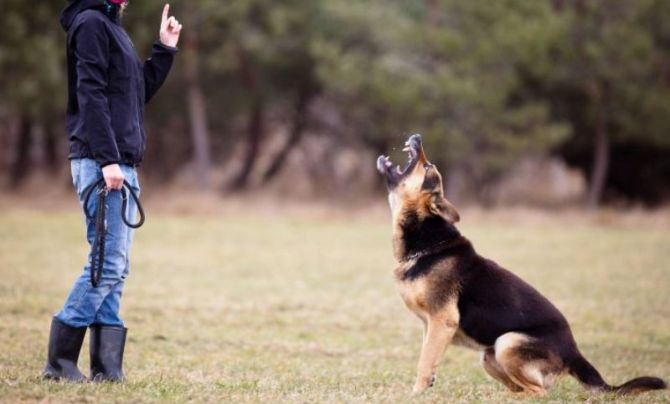
Not all dogs enter training wagging their tails. If your dog is anxious, fearful, or has a history of aggression, you need a specialist—someone with both experience and empathy. This isn’t just about teaching commands—it’s about rebuilding trust, reducing stress, and addressing deep-rooted behaviors.
Look for trainers who specialize in behavioral modification. They often have experience with rescues, trauma-affected dogs, or dogs who’ve been returned to shelters. These trainers use gentle, non-threatening techniques that build confidence gradually. No shouting. No punishment. Just calm, steady progress.
Ask if they’ve worked with anxious or aggressive dogs before. Request examples. A good trainer will be able to walk you through how they approached each case, what techniques they used, and what outcomes were achieved. Better yet, they’ll reassure you that your dog isn’t “broken”—just misunderstood.
Also, these trainers often work in collaboration with veterinary behaviorists. That’s a plus. If your dog’s anxiety is tied to medical issues or severe trauma, you’ll want a trainer who knows when to recommend a vet consult.
Finally, choose someone who respects your pace, too. As the owner of an anxious dog, you’ll need support, patience, and plenty of positive reinforcement yourself. A great trainer will train you just as much as they train your dog—without judgment.
Top-rated Dog Training for Puppies and Small Breeds
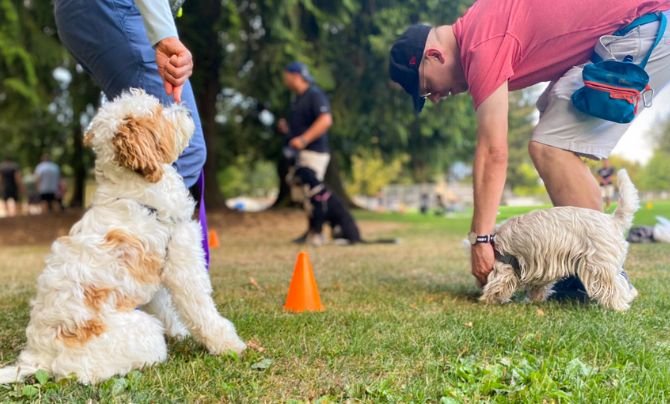
Puppies and small dogs come with their own unique training needs. Don’t let their tiny size fool you—these little ones can develop big problems if not guided properly from the start. The best dog trainer for this stage knows how to combine play, socialization, and structure into each session.
When training puppies, timing is everything. The socialization window (roughly 8–16 weeks) is when your puppy forms impressions of the world. That’s why early puppy training classes are so popular—and so important. Look for trainers who offer “puppy kindergarten” programs. These classes focus on bite inhibition, potty training, leash manners, and basic obedience, all in a safe, age-appropriate environment.
Small breeds also benefit from trainers who understand their physical limitations. Techniques that work for larger dogs may not be suitable for a Chihuahua or Shih Tzu. Gentle leash handling, softer tones, and low-impact exercises are often more effective.
Also, top-rated puppy trainers educate you on puppy psychology. They’ll teach you how to prevent common issues like separation anxiety, excessive barking, and possessiveness—before they become habits. Think of it like pre-school for dogs with a side of parenting class for you.
Lastly, check for positive reviews from other puppy owners. The best puppy trainers are patient, kind, and love watching little dogs learn. If your trainer genuinely enjoys working with pups, it’ll show in everything they do.
Related Articles
- Top 10 Best Light Up Dog Leash Reviews (Updated Guide)
- Top 10 Best Dog Training Collars for Effective Training
- Top 10 Best Nebulizer Machines for Dogs Reviews
- Top 10 Best Automatic Dog Waterer Outdoor Reviews
- Top 10 Best Underground Dog Fence Reviews (Updated Guide)
- Top 10 Best Chew Toys for Aggressive Chewers of 2026
Cost of Dog Training Services
What You Should Expect to Pay
When you’re ready to choose a dog trainer, budget often becomes a major consideration. But here’s the truth—dog training isn’t cheap. And it shouldn’t be. You’re not just paying for a few tricks; you’re investing in a life-changing transformation for both you and your dog. That said, prices can vary wildly based on location, experience, and the type of training.
On average, group classes range from $100 to $200 for a 4 to 6-week course. These classes typically cover basic commands, leash walking, and general manners. They’re great if your dog is already sociable and you’re looking for foundational skills in a controlled setting.
Private sessions, however, can cost anywhere from $75 to $200 per hour depending on the trainer’s credentials and specialization. Some top-tier trainers working with behaviorally challenged dogs may charge $300 or more per session. While this may seem steep, consider the value of fixing long-term issues like aggression, anxiety, or severe disobedience. These sessions are fully customized and usually more efficient.
Then there are board-and-train programs where your dog lives with the trainer for a few weeks. These can cost $1,000 to $3,000 (or more), depending on the length and intensity. It’s a high-ticket option but can deliver powerful results—especially for working professionals or challenging cases.
Also, be aware of add-ons: travel fees, evaluation charges, or gear like clickers, harnesses, or treats. Always ask for a clear breakdown of what’s included so you’re not blindsided by surprise costs.
Remember, the goal is value—not just affordability. Cheap training that doesn’t work is more expensive in the long run. Look for a trainer whose results and professionalism justify the price. If the cost seems high but the reviews are glowing, chances are, it’s worth it.
Are Expensive Trainers Worth It?
So, you’ve found a highly recommended trainer with stellar credentials—but they charge premium rates. Is it worth it? The short answer: often, yes. Especially when the alternative is wasting time and money on ineffective methods or unqualified instructors.
High-end trainers usually bring years of experience, advanced certifications, and a long list of success stories. They’ve dealt with everything—from leash reactivity to separation anxiety—and have a game plan ready. You’re not just paying for their time during the session. You’re paying for the years they’ve spent learning how to handle dogs just like yours.
Many top trainers also offer perks that justify the higher price: personalized follow-up plans, progress tracking, phone support between sessions, or access to private online resources. These extras can make a huge difference in maintaining progress between appointments.
Another point? Expensive trainers often work faster. With deep insight and tailored strategies, they can resolve complex behaviors in fewer sessions. That’s not just cost-effective—it’s a major win for your dog’s well-being.
However, be cautious. Just because a trainer charges a lot doesn’t guarantee quality. Always check reviews, credentials, and consultation vibes. Make sure their teaching style matches your goals.
At the end of the day, your dog’s behavior affects your daily life. A reliable, skilled trainer—no matter the cost—can be the difference between chaos and calm. And honestly, what’s that peace of mind worth to you?
Evaluating the Training Plan and Goals
How to Ensure a Custom Plan for Your Dog
No two dogs are the same—so why settle for cookie-cutter training? When you choose a dog trainer, you should expect a plan that’s tailor-made for your pup’s personality, behavior, and your specific goals as an owner.
A great trainer starts with a full behavioral evaluation. This isn’t just asking, “What do you want your dog to learn?” It’s observing your dog in real-time, noting responses to triggers, energy levels, attention span, and previous training history. The more detailed the assessment, the more accurate the plan.
The trainer should then walk you through a step-by-step roadmap. It might include short-term objectives like “no jumping on guests” and long-term milestones like “off-leash recall in the park.” Clear goals keep everyone—trainer, owner, and dog—on the same page.
Make sure the plan also includes metrics for progress. Will your dog be tested at the end of each phase? Are there behavior benchmarks to hit? Good trainers don’t rely on vibes—they measure results.
A custom plan also takes into account your lifestyle. Do you live in a busy city or a quiet suburb? Have kids at home? Travel often? These factors matter. The right plan fits seamlessly into your day-to-day routine and ensures consistency in your dog’s learning.
Lastly, the best plans are adaptable. Dogs evolve, and training should evolve with them. If something’s not working, your trainer should be ready to pivot without ego. Flexibility is a sign of a true professional.
Importance of Ongoing Progress Reports
You wouldn’t hire a personal trainer who doesn’t track your progress, right? The same logic applies to dog trainers. If you want your dog to improve, you need a system that shows what’s working, what isn’t, and how far you’ve come.
Top trainers provide regular progress reports after each session. These can be verbal recaps, written summaries, or digital logs. They’ll highlight which commands were covered, how your dog performed, and what to practice at home. This accountability keeps the momentum going.
Progress reports also help identify patterns. Maybe your dog is doing well in controlled environments but still struggles in public. Or maybe a certain command is taking longer to stick. With consistent reporting, you can troubleshoot early and avoid frustration later.
Another big advantage? These reports let you celebrate wins—even small ones. When training gets tough, seeing your dog’s growth in black and white is incredibly motivating.
Ask trainers upfront if they provide updates. Bonus points if they use video recaps or a client portal where you can access session notes. It shows they’re serious about communication and transparency.
Training is a journey, not a one-time fix. Ongoing progress reports ensure you’re always moving forward—and remind you how far you’ve already come.
Observing a Training Session Before You Commit
What a Great Session Should Look Like
Before signing on the dotted line, ask if you can observe a session. Reputable trainers will often welcome this—it shows transparency and gives you a real-world glimpse of their methods. Watching a session is like test-driving a car. You’ll learn more in 30 minutes of observation than hours of online research.
So, what should you be looking for? First, pay attention to the tone. Is the environment calm and structured? Does the trainer give clear, concise instructions? Are corrections gentle and fair? Great training looks fluid—not chaotic. There should be a natural rhythm between cue, response, and reward.
Next, observe the dogs. Are they engaged, happy, and willing to work? Or are they nervous, shutting down, or hyper-focused on avoiding punishment? A well-trained dog should look eager—not scared.
Also, watch how the trainer handles challenges. If a dog acts out, how does the trainer respond? With patience and a game plan—or with frustration and force? Real skill shows up when things don’t go perfectly.
And finally, watch the human side. Is the trainer respectful and supportive of the owners? Do they explain concepts clearly? Do clients look confident, or confused and overwhelmed?
If what you see makes you feel empowered and inspired, you’re probably in the right place. If you walk away with doubts? Trust that instinct.
How Trainers Interact with Owners and Dogs
Dog training isn’t just about dogs—it’s a three-way partnership between the trainer, the owner, and the dog. How a trainer interacts with you is just as important as how they handle your pet. This relationship can either make or break your training success.
The best trainers are educators first. They’re not just showing your dog what to do—they’re showing you how to maintain that behavior at home. They communicate in a way that makes you feel capable, not clueless.
A strong trainer-owner relationship includes:
- Clear instruction: You should always leave a session knowing what to practice and how.
- Encouragement: Good trainers celebrate your wins and help you through the setbacks without judgment.
- Mutual respect: If a trainer talks down to you, rushes through your concerns, or dismisses your questions, run the other way.
As for their interaction with dogs, the best trainers show a balance of leadership and love. They guide without intimidation. They’re consistent but kind. Watch for relaxed body language, gentle eye contact, and a lot of tail wags.
If the trainer bonds with both you and your dog, you’ve found a real gem.
Trust Your Gut: Making the Final Decision
When It Feels Right—And When It Doesn’t
After all the research, observations, and interviews, there’s still one more powerful tool left in your decision-making toolbox: your gut feeling. Yep—when it comes to choosing a dog trainer, your instincts matter. You’re trusting this person with not just your money, but your dog’s well-being, behavior, and happiness. That trust needs to feel natural and solid.
Start by asking yourself: do I feel comfortable around this trainer? Did they respect my questions, listen to my concerns, and show genuine interest in my dog’s behavior and personality? If the answer is yes, that’s a green flag.
Also, consider your dog’s response. Dogs are great judges of character. Did your dog seem relaxed around the trainer? Was there curiosity, tail-wagging, or ease during the first meeting? While nervousness is normal in new situations, a fearful or aggressive response shouldn’t be ignored—especially if it persists after multiple encounters.
Be wary of trainers who seem rushed, overly confident without backing it up, or dismissive of your input. You should never feel like a burden or a nuisance for wanting to understand what’s happening in your dog’s training plan. If something feels off, it probably is.
Lastly, don’t ignore red flags in contracts, scheduling, or refund policies. A lack of transparency or an overly rigid agreement might signal bigger issues down the road.
Making the final decision is a mix of logic and intuition. If everything checks out—methods, experience, reviews—and it feels right, go for it. And if you’re unsure? Don’t settle. The right trainer is worth waiting for.
Trial Sessions and Refund Policies
Even after all the due diligence in the world, you might still wonder, “What if it doesn’t work out?” That’s why trial sessions and clear refund policies are so important. Reputable trainers often offer a one-time evaluation or trial session to see if there’s a mutual fit. Take advantage of it.
These trial sessions usually include a behavioral assessment and a short training segment. Use this time to evaluate how the trainer communicates, how your dog responds, and whether their approach feels aligned with your values. It’s also your chance to clarify goals and get a feel for their pacing.
Ask about their refund or cancellation policy upfront. Life happens—dogs get sick, schedules shift, and sometimes, personalities just don’t mesh. A transparent policy shows professionalism and helps you avoid unnecessary stress if things don’t go as planned.
Also, be cautious of trainers who demand full payment upfront for multiple sessions without any guarantee of satisfaction. Most ethical trainers will offer flexible packages, pay-as-you-go options, or money-back guarantees if you’re truly unhappy with the service.
When in doubt, ask for everything in writing—training plan, session breakdowns, refund terms, and any extras promised. Clear agreements make for smoother training experiences.
Alternative Dog Training Options
Online Dog Training Courses

In today’s digital world, in-person training isn’t your only option. Online dog training courses have exploded in popularity, and for good reason. They’re flexible, affordable, and often designed by world-renowned trainers. If you’re someone with a tight schedule or limited local options, this route might be a game-changer.
The best online courses break down lessons into short, easy-to-follow modules. You’ll often find video tutorials, printable homework sheets, and access to private communities where you can ask questions and get feedback. Some even offer live Zoom sessions with real trainers.
Popular platforms include sites like Udemy, Coursera, or specialist dog-training programs like Zak George, SpiritDog Training, or The Dog Academy. Many courses focus on specific challenges, such as leash pulling, reactivity, crate training, or recall—letting you tailor the experience to your dog’s unique needs.
Of course, there are downsides. Without a trainer physically present, you’ll need more discipline and self-motivation. It also takes a sharp eye to recognize when your dog’s body language is signaling confusion, stress, or fear—something a seasoned in-person trainer would spot instantly.
Still, for tech-savvy owners or dogs that need low-stimulation environments, online training is a fantastic alternative. Just be sure to read reviews, check credentials, and watch free preview videos before committing to a course.
Dog Training Books and Apps
Prefer the DIY route? You’ve got options—great ones. Books and apps are perfect for owners who love reading, want to deepen their knowledge, or are supplementing professional training.
Top-rated books like “The Power of Positive Dog Training” by Pat Miller or “Don’t Shoot the Dog” by Karen Pryor offer a deep dive into dog psychology and practical techniques. These books aren’t just about commands—they teach you how dogs think, why behavior happens, and how to shape responses with compassion and strategy.
Then there are training apps. Think of them as your pocket-sized dog coach. Apps like Pupford, Dogo, and GoodPup include video lessons, step-by-step plans, progress tracking, and sometimes even access to real trainers via chat. They’re great for busy owners who want on-demand support.
Like anything, success depends on your commitment. Books and apps give you knowledge, but they can’t correct mistakes in real time. If you’re a first-time dog owner, you may need more support to avoid reinforcing bad habits unintentionally.
Used wisely, though, these tools can save money, enhance your bond with your dog, and turn training into a fun, daily ritual.
Conclusion
Choosing a dog trainer isn’t just about finding someone who can teach your dog to sit or stay. It’s about building a lasting foundation of trust, respect, and clear communication between you and your furry best friend. With the right trainer, your dog doesn’t just learn commands—they learn confidence, manners, and how to live a happy, balanced life by your side.
From understanding training philosophies to spotting red flags, asking the right questions, and trusting your instincts—you now have a complete roadmap to make an informed, empowered choice. Whether you go with private sessions, group classes, or even digital alternatives, the most important factor is fit. Fit for your dog’s needs, your goals, and your lifestyle.
So take your time, do your research, and don’t settle for anything less than someone you—and your dog—can trust. Because at the end of the day, a great trainer doesn’t just train dogs. They help build families that work in harmony.
FAQs
What’s the best dog trainer for aggressive dogs?
Look for a certified behaviorist or a trainer specializing in behavioral modification. They should have experience handling aggression with calm, force-free methods and ideally work in partnership with veterinarians.
How long does it take to train a dog professionally?
Basic obedience might take 4–6 weeks, but deeper behavioral issues can take months. Consistency at home plays a huge role in how quickly your dog learns and retains commands.
Can I train my dog at home with an online course?
Yes! Online courses are effective if you follow them consistently and choose a course that fits your dog’s needs. Look for programs that offer trainer support and video feedback.
Should I be present during the training sessions?
Absolutely. The best training includes the owner. Your involvement ensures that the dog listens to you, not just the trainer, and helps you reinforce learning at home.
What are the top-rated certifications for dog trainers?
The most respected credentials include CPDT-KA (Certified Professional Dog Trainer), IAABC (International Association of Animal Behavior Consultants), and APDT (Association of Professional Dog Trainers).


